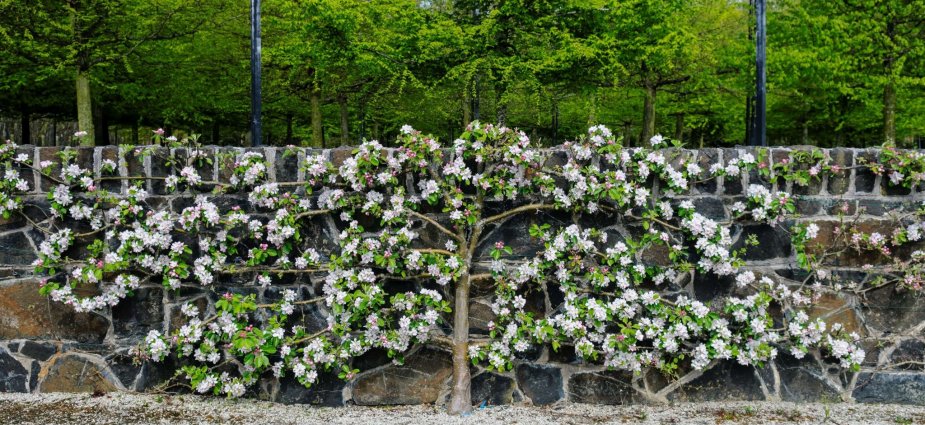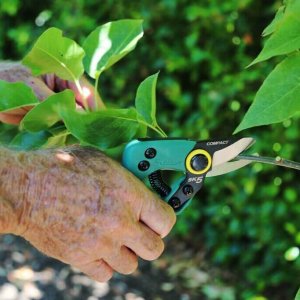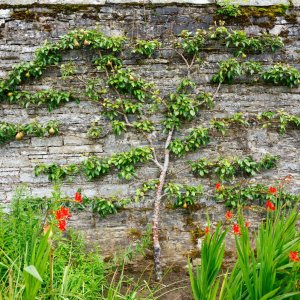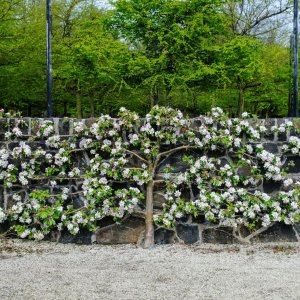The ancient gardening art of espalier is making a big comeback in gardens to save on space and bring a structural elegance to modern outdoor spaces.
Espaliering is the art of training a tree or shrub to grow against a wall or fence to create a flat, two-dimensional effect. It is a technique steeped in history that dates back to ancient Roman and Egyptian times, but it was during the Middle Ages in Europe that the art of training trees in this specific way was perfected.
In the past, fruit trees were artfully espaliered against castle walls to provide fruit and decoration, without intruding on courtyard or path space. The brick or stone that the flat trees were grown against absorbed the sun’s heat and created favourable micro-climates for fruit production.
Today, espaliering creates a decorative, compact natural facade that is perfect for city courtyards and small spaces. Because trained trees are more condensed, they make picking and netting fruit easier, fruit often ripens earlier, and the flowers and fruit are visually beautiful as well as purposeful. So, with little patience and thoughtful pruning, you can create a living work of art in your garden.
Horticulturalist Melissa King shows that you don’t need to be a green thumb to enjoy this art. Using the Cyclone garden range, she recommends a four-step process through which one can create their own home-grown espalier.
Readers also enjoyed Verge Gardening and Seed Bank













